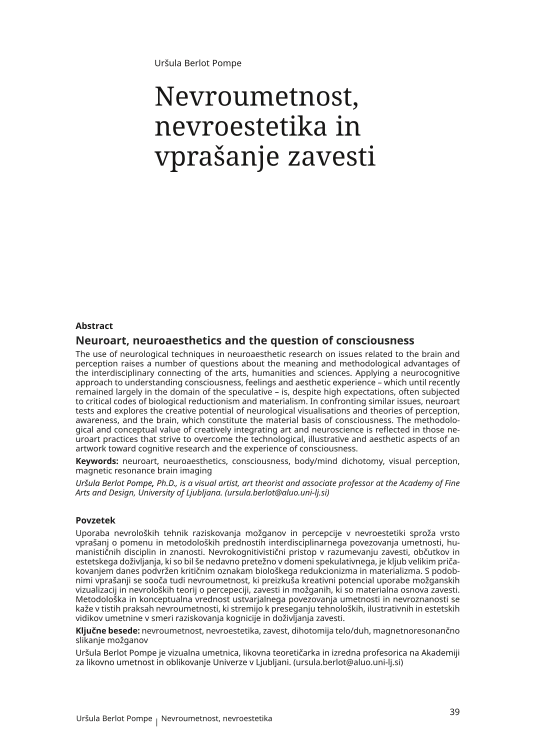The use of neurological techniques in neuroaesthetic research on issues related to the brain and perception raises a number of questions about the meaning and methodological advantages of the interdisciplinary connecting of the arts, humanities and sciences. Applying a neurocognitive approach to understanding consciousness, feelings and aesthetic experience – which until recently remained largely in the domain of the speculative – is, despite high expectations, often subjected to critical codes of biological reductionism and materialism. In confronting similar issues, neuroart tests and explores the creative potential of neurological visualisations and theories of perception, awareness, and the brain, which constitute the material basis of consciousness. The methodological and conceptual value of creatively integrating art and neuroscience is reflected in those neuroart practices that strive to overcome the technological, illustrative and aesthetic aspects of an artwork toward cognitive research and the experience of consciousness.




